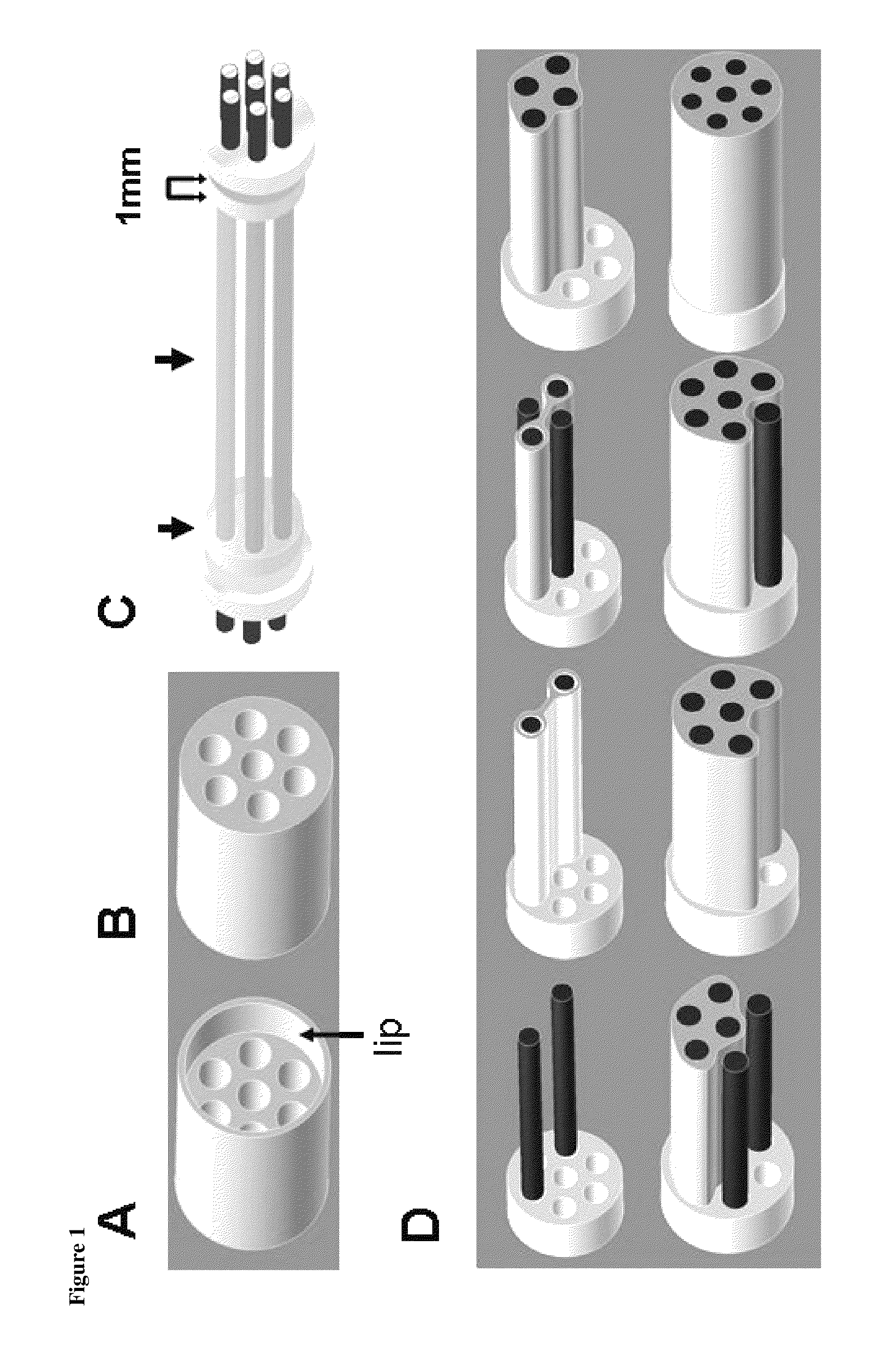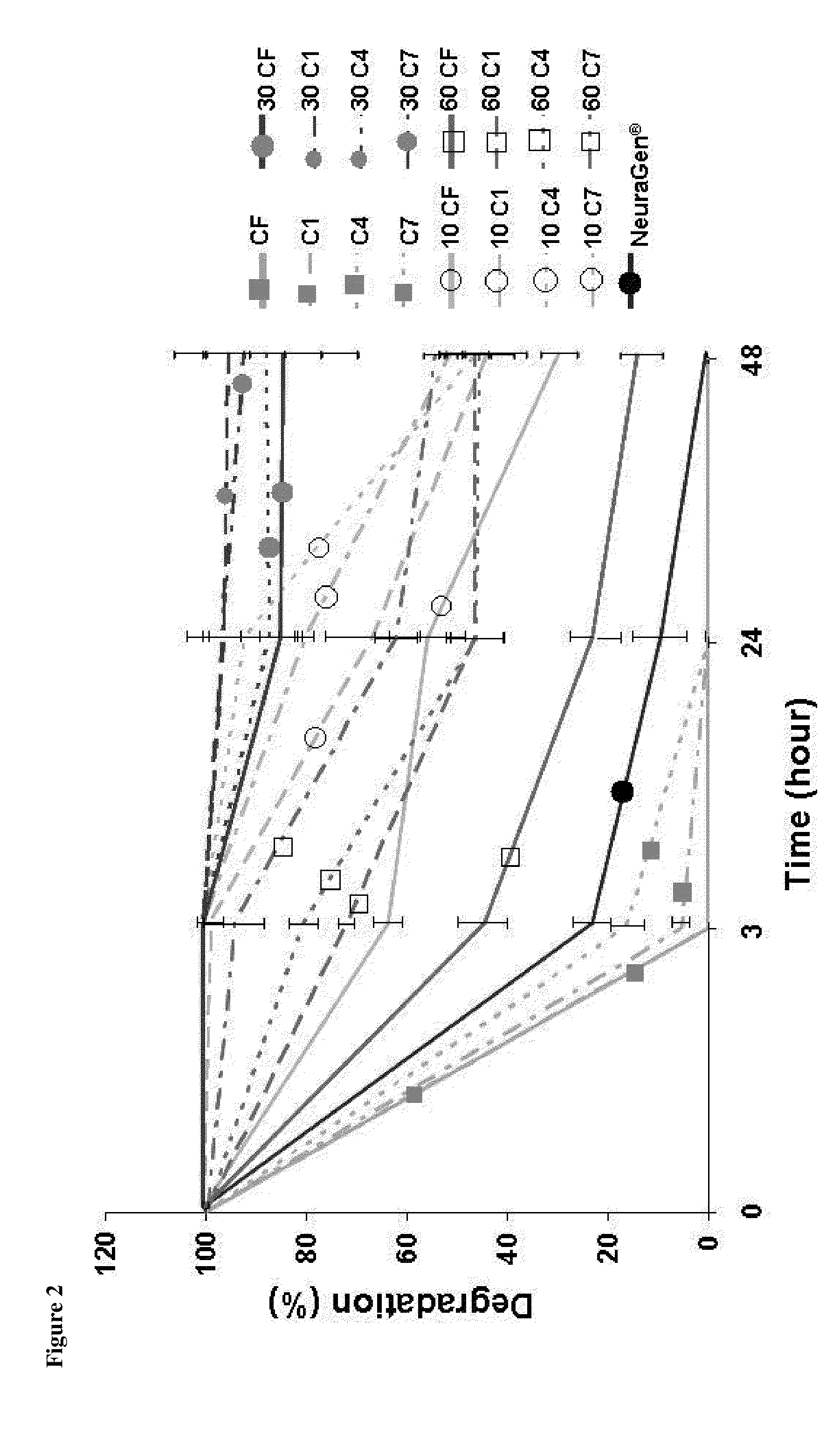Multichannel collagen nerve conduit for nerve repair
- Summary
- Abstract
- Description
- Claims
- Application Information
AI Technical Summary
Benefits of technology
Problems solved by technology
Method used
Image
Examples
Embodiment Construction
Materials and Methods
Fabrication of Multichannel Collagen Nerve Conduits
[0041]In this study, single- and multichannel conduits were designed with dimensions appropriate for a rat model of sciatic nerve repair. Cylindrical “negative” moulds were constructed with 4 or 7 wires spanning end caps or retainers to create channels for nerve guidance. Channel internal diameters (determined by the wire outer diameters) for 4- and 7-channel moulds were 530 μm and 410 μm, respectively. The distance between the two end caps of each mould was 1 cm. FIG. 1A shows a schematic of a 7-channel collagen conduit on a mould. For nerve repair, the conduits were fabricated with a 1 mm lip at each end (FIG. 1B) for insertion and suturing of the nerve stump. Conduits without lips were fabricated for in vitro characterization studies (FIG. 1C). The procedure for fabricating the 7-channel collagen conduit is shown schematically in FIG. 1D. Two stainless steel wires were inserted into channels in the two end ca...
PUM
| Property | Measurement | Unit |
|---|---|---|
| Concentration | aaaaa | aaaaa |
| Concentration | aaaaa | aaaaa |
| Concentration | aaaaa | aaaaa |
Abstract
Description
Claims
Application Information
 Login to View More
Login to View More - R&D
- Intellectual Property
- Life Sciences
- Materials
- Tech Scout
- Unparalleled Data Quality
- Higher Quality Content
- 60% Fewer Hallucinations
Browse by: Latest US Patents, China's latest patents, Technical Efficacy Thesaurus, Application Domain, Technology Topic, Popular Technical Reports.
© 2025 PatSnap. All rights reserved.Legal|Privacy policy|Modern Slavery Act Transparency Statement|Sitemap|About US| Contact US: help@patsnap.com



